Learn about baby chameleons and their care
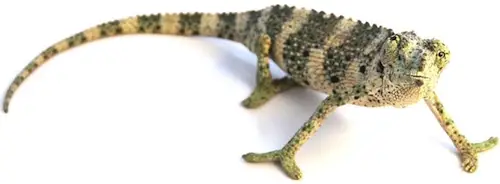
Baby Chameleons
There aren’t many things cuter than a baby chameleon—just ask anyone who walks into my facility and interacts with one. They’re just so fragile, and their locomotion so comical and clumsy. They keyword though, is fragile.
Baby chameleon care is a whole new ballgame. They have special requirements that must be met, and I can tell you from having raised thousands of them—they aren’t very forgiving. But, they’re definitely worth the extra work.
Below I’ll explain how baby chameleons are different than their older counterparts, including some pictures and information about hatching, live-births, and anecdotal observations.
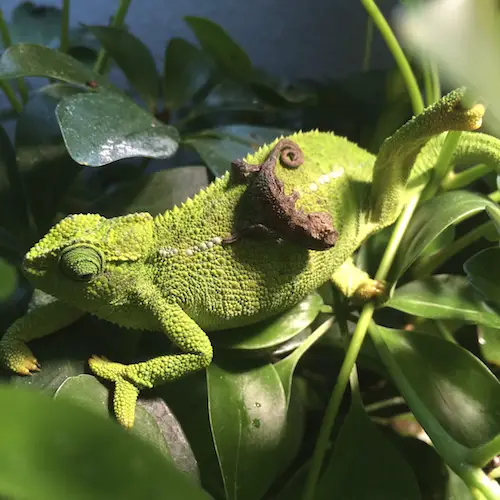
Here’s a mother and baby Rudis chameleon I happened across
one day when I was checking on all the enclosures. She had
just given birth.
Right out of the egg (or following live birth), baby chameleons are up-and-walking within seconds. Their instincts tell them to get going quickly, as predators are everywhere in the wild. Even in captivity, it’s dangerous for them, which I’ve witnessed first-hand.
There’s also no maternal behavior with chameleons, so the mother doesn’t care for the babies whatsoever. The female digs a short tunnel in the dirt, usually 6-12 inches deep, lays eggs, covers them, and walks away forever. The eggs are laid one on top of another in a big pile, for lack of a better word—pictured below.
The baby chameleons hatch several months later, and claw and dig their way to the surface, where they begin their new life. A few species of chameleon give live-birth and don’t lay eggs—this would include Mt. Meru, Jackson’s, Werner’s, and Rudis chameleons, all of which I’ve observed giving birth in my care. It’s a wonderfully fascinating experience that never gets old.
When it comes to live birth, chameleon females climb around the enclosure and drop baby chameleons as they go. The babies generally land on a leaf or branch and stick to it. They then wiggle and break free of the amniotic sac, at which point they’re up-and-running. It’s important to get them out of the enclosure as quickly as possible, as larger chameleons are a cannibilistic risk.
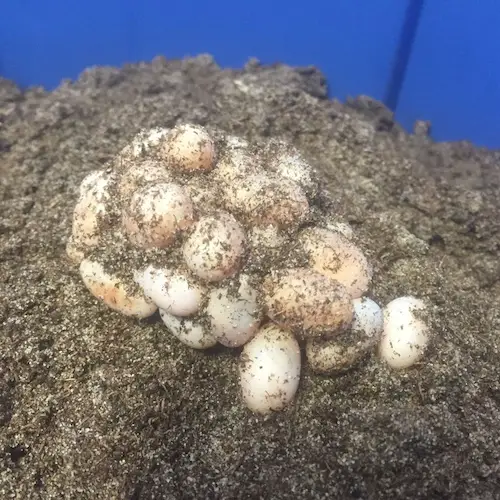
Here are some Veiled chameleon eggs I discovered when I was cleaning
out one of my chameleon egg-laying bins. I took the eggs apart and
placed them into an incubation container, where the babies hatched
successfully several months later.
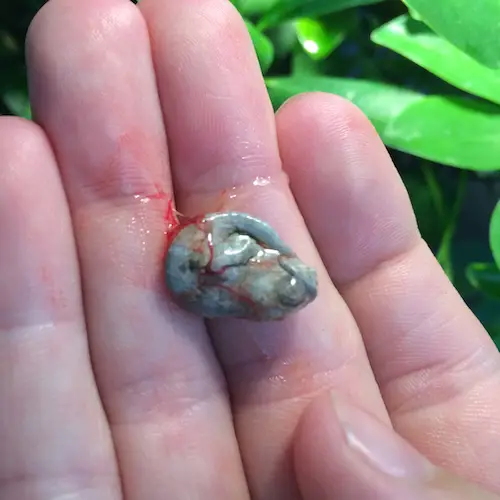
A live-birthed baby chameleon, still in the amniotic sac on my hand.
It broke out of the sac moments later and was very active and healthy.
So we’ve established that baby chameleons are independent right from the start. They generally migrate directly up into the relative protection of trees and bushes and absorb any remaining yolk sac. The yolk sac provides nourishment for them for several days, so they don’t usually eat right away.
Soon they begin hunting tiny prey—I feed mine hydei fruit flies and pinhead crickets exclusively. I feel that melanogaster fruit flies escape through the cage’s screen walls too easily, so I don’t use them at all.
Baby chameleons need more supplementation than juveniles and adults, as they’re growing more quickly and need extra calcium, vitamins, and minerals for bone and muscle development. I dust the pinhead crickets with calcium about every-other-time, using Repashy SuperCal LoD or SuperCal NoD. I dust with a multivitamin once per week, and I usually use Repashy SuperVite or Herptivite.
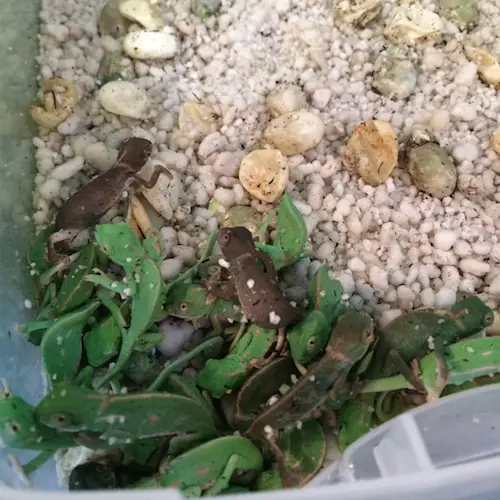
Here’s what I found one morning when I checked on some of my
Veiled chameleon eggs. I’ve noticed that when one hatches,
it seems to alert the other eggs to start hatching. Some
scientists believe eggs communicate chemically.
Baby chameleons should be set up in a smaller cage—I generally use a ReptiBreeze 16” x 16” x 20” screen cage. The reason is that they need to be able to hunt down prey insects easily, and if the cage is large, it’s tougher for them to come across the bugs.
It’s also a little tougher to control humidity in a large enclosure. Baby chameleon need a lot of humidity—they can desiccate (dry-out) very easily, it’s a real risk. I have my babies misted for 15–30 seconds about eight times per day, but you can get away with fewer mistings.
I also make sure that the foliage inside the cage, whether it’s a live plant or artificial, reaches up to the very top of the enclosure. The reason is, baby chameleons like to hang out upside-down on the ceiling, and if they don’t see an easy way down, sometimes they can dehydrate from over-exposure to the lighting. In other words, make it really easy for them to climb down.
Every couple weeks, it’s a good idea to sort out your baby chameleons based upon their size. I usually split them into smalls, mediums, and larges. This prevents bullying and over-competition for food.

Here are some newborn baby Mt. Meru chameleons
I collected out of the cage of a gravid female.

Check out these siblings handing out together.
I couldn’t resist taking a picture.
There are some species that seem to be easy to raise from babies, and some are consistently and noticeably more difficult. Below I’ve put together a quick list, which is based solely upon my experience keeping, breeding, and raising chameleons.
The easiest baby chameleons to raise:
1.) Veiled chameleon (Chamaeleo calpytratus)
2.) Panther chameleon (Furcifer pardalis)
3.) Oustalet’s chameleon (Furcifer oustaleti)
The most challenging baby chameleons to raise:
1.) Johnston’s chameleon (Chamaeleo johnstoni)
2.) Jewelled chameleon (Furcifer campani)
3.) Meller’s chameleon (Chamaeleo melleri)
Fortunately, as you’ll see from above, the easiest tend to be the ones more commonly available, and the most difficult are much rarer. This makes perfect sense of course.
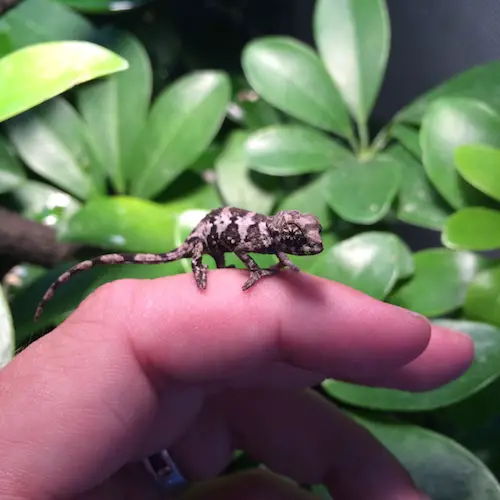
One of my first baby Mt. Meru chameleons shortly after birth.
This is a live-bearing species. That’s schefflera in the background.
